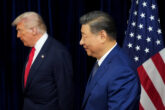November 03, 2020
How To Avoid Becoming a Misinformation Superspreader
As local officials continue to count votes in this year’s general elections, America’s digital ecosystem is ripe for disruptive and potentially dangerous misinformation. Elections always present logistical hurdles, but holding an election in the midst of a pandemic presents new and complex challenges. This year, we witnessed, for instance, unusually high voter turnout, as Americans engaged in early in-person and mail-in voting. These forms of voting, which may have been unfamiliar to many Americans pre-pandemic, were targets of widespread election misinformation. Polarized online spaces will not only amplify and refract these challenges but require that everyday users answer the call to digital citizenship. Social media companies like Twitter and Facebook bear immense responsibility for responding to misinformation outbreaks, but they must not — and cannot — go it alone.
Social media companies like Twitter and Facebook bear immense responsibility for responding to misinformation outbreaks, but they must not — and cannot — go it alone.
At every level of American political life, the 2020 elections are not only testing social media companies’ ability to police their platforms, but social media users’ capacity and willingness to show restraint online. Both during and after this fraught set of events, every American must embrace their role as a digital citizen by exercising caution and restraint when creating, consuming, and sharing online content.
Read the full article in Inkstick.
More from CNAS
-
Transatlantic Security / Technology & National Security
Look Before We Leap on Artificial IntelligenceThis article was originally published on The Dispatch. A debate about the role that artificial intelligence should and will play in society, and how it will affect humanity fo...
By Jon B. Wolfsthal
-
Technology & National Security
Caleb Withers on the Cybersecurity Frontier in the Age of AICaleb Withers, research associate at the Center for a New American Security, joins Kevin Frazier, the AI Innovation and Law Fellow at the University of Texas School of Law and...
By Caleb Withers
-
Technology & National Security
Prepared, Not ParalyzedExecutive Summary The Trump administration has embraced a pro-innovation approach to artificial intelligence (AI) policy. Its AI Action Plan, released July 2025, underscores t...
By Janet Egan, Spencer Michaels & Caleb Withers
-
Indo-Pacific Security / Technology & National Security
Sharper: Tech + ChinaRecent talks between President Donald Trump and Chinese Communist Party General Secretary Xi Jinping placed a spotlight on emerging technologies, from high-end chips to minera...
By Charles Horn & Sevi Silvia




